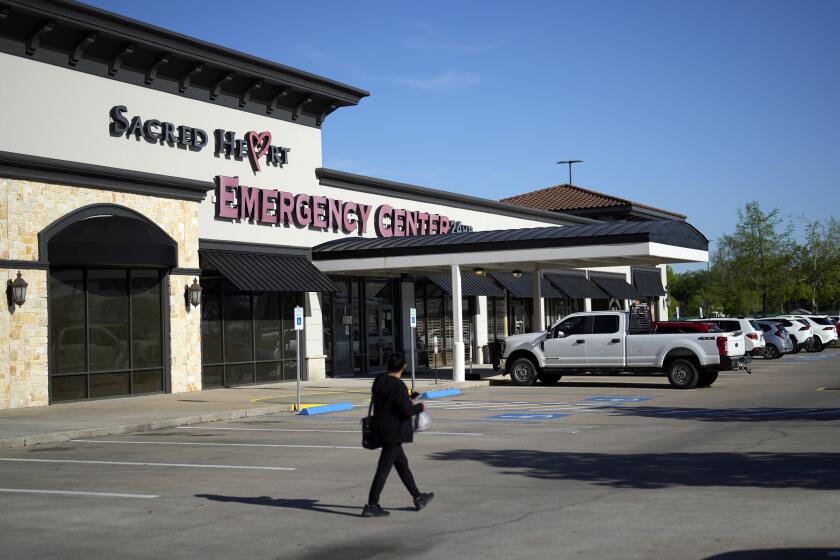Capitol Journal: California’s big housing bill tanked. Newsom is partly to blame

Big and bold ideas often bomb out in the Legislature. And the biggest bill of this young session — a proposal to spur high-density housing — just blew up.
Our democratic system of frustrating checks and balances isn’t designed for quick fixes. It fosters incrementalism. That can be agonizing. But more often than not, it ultimately produces practical, workable compromise legislation.
Something similar to San Francisco Democrat Scott Wiener’s Senate Bill 50 will eventually pass the Legislature. But it’s highly unlikely to happen this year, nor maybe next.
When it does, there’ll need to be a committed effort by the governor to muscle such a contentious measure through the torturous legislative process. There was none of that this time from rookie Gov. Gavin Newsom, although at the bill’s funeral he professed to be “disappointed” at its demise.
“I alone cannot determine the fate of particular bills,” Newsom told reporters Tuesday.
But an effective governor can steer a bill to passage by cajoling and coercing lawmakers to vote the way he wants. Ask Govs. Brown, Schwarzenegger, Wilson ... any of them. They all rolled out pork and strong-armed. Governing is more than photo-ops.
California must build upward more and sideways less to meet the housing demands of a still-expanding population. There’s only so much livable land left with easy access to jobs and water.
At around 40 million people, we’re growing much slower than 30 or 50 years ago, partly because California has become unaffordable for many low-income and middle-class families. So they’re settling out of state.
Desirable housing within tolerable commute distance of good jobs is already financially unattainable for millions, especially young adults just starting out, and we’re headed to 50 million people by midcentury.
We need to build 180,000 new housing units a year, experts say, and we’ve only averaged 80,000 over the last decade. In contrast, before the Great Recession, we built 213,000 in 2004. In 1986, 315,000 were built.
Running for election last year, Newsom promised to help build 3.5 million new homes by 2025. He’s off to a slow start.
SB 50 would have forced Sacramento’s desire for more high-density housing on local governments that are still wedded to ranch-style living with backyard pools and barbecues — an integral part of the old California Dream. The measure would have overridden local zoning laws.
It would have required cities to permit mid-rise apartment complexes near rail stations and major job centers. Duplexes and fourplexes would have been allowed even on land zoned only for single-family homes. Minimum parking requirements could have been waived.
“We set up our land-use patterns for a much smaller state,” Wiener says. “This is a hard bill because anytime you ask people to do things differently there’s a pushback.
“But look at the cost of housing, the explosion of homelessness and exodus of working families.”
One big pushback is from local government officials who object to losing substantial control over housing decisions in their communities.
“There’s only one truth in government, and that is that no one likes to give up power,” says Dan Dunmoyer, president of the California Building Industry Assn., which strongly supported the bill. “It’s really hard for local government to say, ‘We want someone from on high to create a housing plan for our community.’”
Suburban homeowners also pushed back against their legislative representatives. They feared increased congestion and loss of community character. They’re the NIMBYs — not in my backyard. And, really, who can blame them?
“You’re a legislator and you go back to your community and a local official says, ‘This guy sold the community down the river.’ And that’s a tough vote for a legislator to make,” says Allan Zaremberg, president of the California Chamber of Commerce, which supported the bill.
“All our polls show that the public always has more faith in local officials than the state. They’re more likely to be known and more likely to be trusted.”
Many legislators understand that because they once were a city council member or a county supervisor.
For SB 50, the legislative process worked as designed and should have been expected, given the players.
The bill first went to the Senate Housing Committee, headed by the measure’s author. No surprise: It passed easily.
Then came the Governance and Finance Committee, chaired by Sen. Mike McGuire (D-Healdsburg), who represents several small counties in the northern wine country. He opposed the bill. So a deal was cut: Counties with fewer than 600,000 residents would be exempt from much of the bill.
There was just one “no” vote — by Sen. Bob Hertzberg (D-Van Nuys). Heavy opposition came from his San Fernando Valley district.
“It’s an overreach,” Hertzberg says of the bill. “We don’t need to go that far.”
Next stop was the Appropriations Committee, chaired by Sen. Anthony Portantino (D-La Cañada Flintridge.) His district is the epitome of comfortable ranch-style living. No compromise. No hearing. No public vote. On the shelf.
Portantino issued a statement indicating he thought the state should offer local governments “incentives” — presumably money — to speed up homebuilding.
Meanwhile, the homebuilding industry is impatient and perplexed.
“Government is telling us to build inside cities,” Dunmoyer says, “but they’re killing legislation that makes it easier to build inside cities. That’s schizophrenia….
“The question is: How does the governor weigh in? Portantino arguably represented his district well. But somebody has to represent California better.”
Representing California is the governor’s job.
Follow @LATimesSkelton on Twitter
More to Read
Get the L.A. Times Politics newsletter
Deeply reported insights into legislation, politics and policy from Sacramento, Washington and beyond. In your inbox three times per week.
You may occasionally receive promotional content from the Los Angeles Times.







